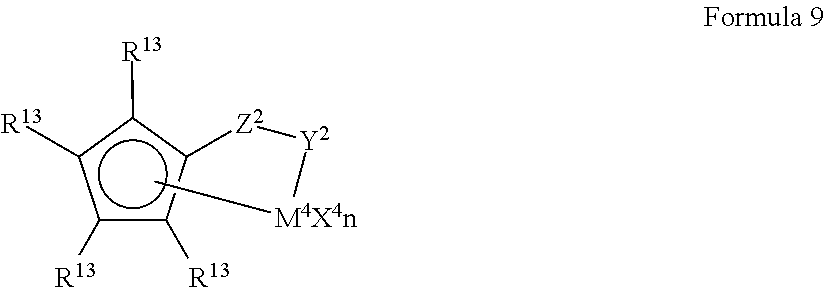Polyethylene Powder, Microporous Membrane, and Fiber
- Summary
- Abstract
- Description
- Claims
- Application Information
AI Technical Summary
Benefits of technology
Problems solved by technology
Method used
Image
Examples
example 1
Preparation of Solid Catalytic Component [A] Metallocene Catalyst
(Preparation of Carrier [A-1])
[0316]Silica Q6 [manufactured by Fuji Silysia Chemical Ltd.] was used as a carrier precursor. Silica Q6 was heat-treated at 400° C. for 5 hours in the nitrogen atmosphere. The Silica Q6 thus heat-treated had a specific surface area of 480 m2 / g and an average particle size of 9.5 μm. The amount of hydroxy groups on the surface of the silica thus heat-treated was 1.85 mmol / g. In a 1.8 L autoclave purged with nitrogen, the heat-treated Silica Q6 (40 g) was dispersed in 800 mL of hexane to obtain slurry. While the temperature of the obtained slurry was kept at 20° C. with stirring, 80 mL of a hexane solution of triethyl aluminum (concentration: 1 mol / L) was added thereto. Then, the mixture was stirred for 2 hours to prepare 880 mL of hexane slurry of a triethyl aluminum-adsorbed carrier [A-1].
Preparation of Transition Metal Compound Component [B]
[0317][(N-t-Butylamido) (tetramethyl-η5-cyclopen...
example 2
[0325]A polyethylene powder was obtained in the same way as in Example 1 except that 0.10 parts by mass of fine particles of aluminum hydroxide (APYRAL® 40CD, manufactured by Nabaltec AG, D50=1.3 μm) were added. The polyethylene powder thus formulated was indicated by PE1-2 in Table 1. Precipitates recovered from PE1-2 were confirmed to contain particles having an average particle size smaller than 50 μm. Evaluation was conducted in the same way as in Example 1 using PE1-2. The results are shown in Table 1.
example 3
[0326]A polyethylene powder was obtained in the same way as in Example 1 except that 0.29 parts by mass of fine particles of aluminum hydroxide (APYRAL® 40CD, manufactured by Nabaltec AG, D50=1.3 μm) were added. The polyethylene powder thus formulated was indicated by PE1-3 in Table 1. Precipitates recovered from PE1-3 were confirmed to contain particles having an average particle size smaller than 50 μm. Evaluation was conducted in the same way as in Example 1 using PE1-3. The results are shown in Table 1.
PUM
| Property | Measurement | Unit |
|---|---|---|
| Length | aaaaa | aaaaa |
| Length | aaaaa | aaaaa |
| Fraction | aaaaa | aaaaa |
Abstract
Description
Claims
Application Information
 Login to View More
Login to View More - R&D
- Intellectual Property
- Life Sciences
- Materials
- Tech Scout
- Unparalleled Data Quality
- Higher Quality Content
- 60% Fewer Hallucinations
Browse by: Latest US Patents, China's latest patents, Technical Efficacy Thesaurus, Application Domain, Technology Topic, Popular Technical Reports.
© 2025 PatSnap. All rights reserved.Legal|Privacy policy|Modern Slavery Act Transparency Statement|Sitemap|About US| Contact US: help@patsnap.com

